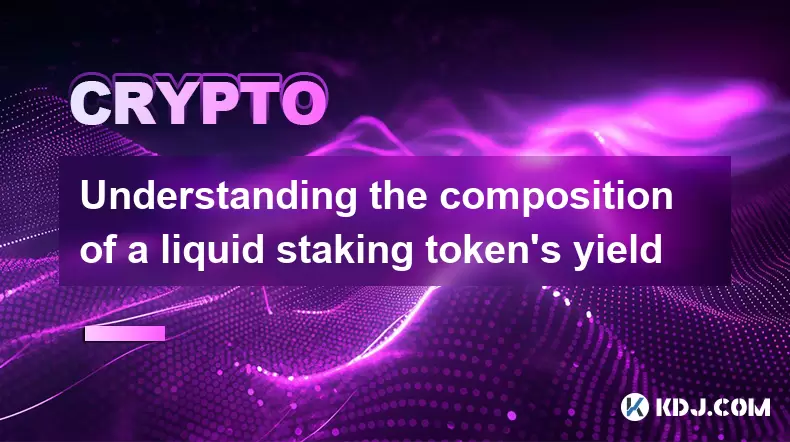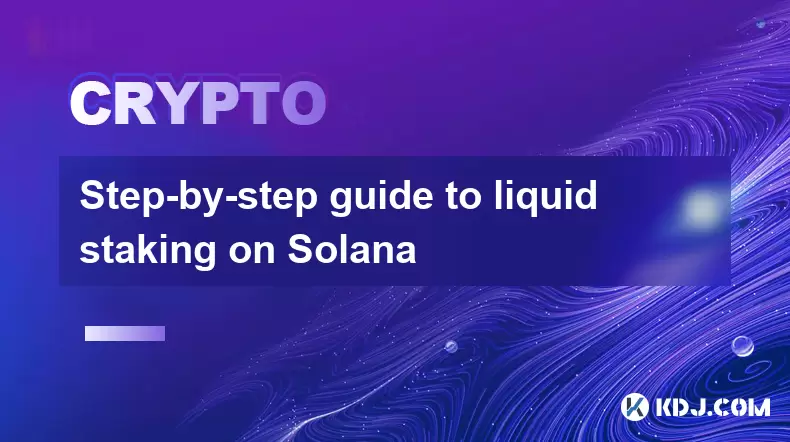-
 Bitcoin
Bitcoin $117400
-0.46% -
 Ethereum
Ethereum $3768
0.60% -
 XRP
XRP $3.551
2.09% -
 Tether USDt
Tether USDt $1.000
0.00% -
 Solana
Solana $203.2
11.30% -
 BNB
BNB $770.9
1.92% -
 USDC
USDC $0.9999
0.01% -
 Dogecoin
Dogecoin $0.2709
-0.02% -
 Cardano
Cardano $0.9024
4.49% -
 TRON
TRON $0.3139
0.60% -
 Hyperliquid
Hyperliquid $45.60
-1.41% -
 Stellar
Stellar $0.4730
-1.34% -
 Sui
Sui $4.025
2.15% -
 Chainlink
Chainlink $19.79
2.19% -
 Hedera
Hedera $0.2724
-2.39% -
 Avalanche
Avalanche $25.93
3.05% -
 Bitcoin Cash
Bitcoin Cash $524.0
-1.83% -
 Shiba Inu
Shiba Inu $0.00001558
0.50% -
 Litecoin
Litecoin $116.7
-0.30% -
 UNUS SED LEO
UNUS SED LEO $8.996
0.00% -
 Toncoin
Toncoin $3.334
1.83% -
 Polkadot
Polkadot $4.506
0.34% -
 Uniswap
Uniswap $10.99
4.83% -
 Ethena USDe
Ethena USDe $1.001
0.03% -
 Pepe
Pepe $0.00001461
3.17% -
 Monero
Monero $320.3
-1.01% -
 Bitget Token
Bitget Token $4.935
0.36% -
 Dai
Dai $0.9998
0.00% -
 Aave
Aave $322.4
-1.25% -
 Bittensor
Bittensor $455.6
9.33%
What is the APY for liquid staking?
Liquid staking lets users earn variable APY—often influenced by network inflation, validator performance, and fees—by staking assets while retaining liquidity through derivative tokens like stETH or rETH.
Jul 22, 2025 at 11:50 am

Understanding APY in the Context of Liquid Staking
APY, or Annual Percentage Yield, is a term commonly used in the world of finance and increasingly in the cryptocurrency space to describe the real rate of return earned on an investment over a year, taking into account the effect of compounding interest. In the context of liquid staking, APY refers to the estimated annual return that users can expect by depositing their staked assets into a liquid staking protocol.
Unlike traditional staking, where users lock up their assets for a set period and cannot access them until the lock-up ends, liquid staking allows users to retain liquidity by issuing derivatives or tokens (like stETH, rETH, or similar) that represent the staked assets. These tokens can be traded, used in DeFi protocols, or held, all while earning staking rewards.
The APY in liquid staking is not fixed and can fluctuate based on several factors, including network inflation rates, demand for staking services, validator performance, and market conditions.
How APY is Calculated in Liquid Staking Protocols
The calculation of APY in liquid staking is primarily based on the performance of the underlying blockchain network and the efficiency of the liquid staking provider. When a user stakes their tokens via a liquid staking platform, they receive a liquid token that accrues value based on the block rewards earned by validators on the network.
To calculate the APY for liquid staking, platforms typically use the following formula:
APY = (1 + r/n)^n - 1
Where:
- r is the periodic interest rate (daily, weekly, monthly reward rate)
- n is the number of compounding periods per year
For example, if a liquid staking platform offers a daily reward rate of 0.05%, the APY would be approximately 20.02% when compounded daily.
However, in practice, most liquid staking platforms provide real-time APY data on their dashboards, which is derived from on-chain data and validator rewards. This figure is constantly changing and should be monitored regularly.
Factors That Influence APY in Liquid Staking
Several variables affect the APY earned through liquid staking. Understanding these can help users make more informed decisions about where and how to stake.
- Network Inflation Rate: Some blockchains use inflation to reward validators. The higher the inflation rate, the higher the potential APY.
- Validator Efficiency: If validators are offline or miss blocks, the rewards are reduced, directly impacting APY.
- Platform Fees: Liquid staking providers often charge a service fee, which can lower the effective APY for users.
- Token Price Volatility: While the staked derivative tokens represent the underlying asset, their price may fluctuate, which can affect overall returns.
- Demand for Liquid Staking Derivatives: High demand can lead to premiums or discounts in the market price of liquid tokens, which indirectly impacts APY perception.
These factors make it crucial for users to track the APY regularly and understand the risk-reward trade-off associated with a particular liquid staking provider or network.
Popular Liquid Staking Platforms and Their APY Models
Several platforms offer liquid staking services, each with its own APY structure and reward mechanisms. Here’s a breakdown of some of the most prominent ones:
- Lido Finance (stETH): Lido is one of the largest liquid staking platforms, primarily for Ethereum. Users deposit ETH and receive stETH, which accrues staking rewards. The APY fluctuates based on Ethereum’s network rewards and validator performance.
- Rocket Pool (rETH): Rocket Pool allows users to stake ETH and earn rETH. It offers decentralized validator services, and the APY depends on the number of validators online and the network’s inflation rate.
- StakeWise (vETH): StakeWise provides liquid staking on Ethereum with a focus on capital efficiency and decentralization. The APY is calculated based on the performance of the pooled validators.
- Binance Liquid Staking (ETH): Binance offers liquid staking for ETH and other tokens, with APY updated daily and influenced by centralized staking performance and fees.
Each of these platforms has a dashboard or analytics section where users can view the current APY and historical performance.
How to Monitor and Compare APY Across Liquid Staking Providers
Monitoring APY is essential for maximizing returns. Here’s how users can track and compare APY across different liquid staking platforms:
- Use Yield Tracking Platforms: Websites like Dune Analytics, DefiLlama, or Staking Rewards offer real-time APY data for various liquid staking derivatives.
- Check Platform Dashboards: Most liquid staking providers have a dedicated section showing the current APY and staking rewards.
- Compare Net APY After Fees: Always check the fee structure of the platform. A high gross APY may be offset by high service fees, reducing the net return.
- Analyze Historical APY Trends: Look at how the APY has changed over time, which can indicate network stability or volatility.
- Consider Token Price Impact: Some liquid tokens trade at a discount or premium, which can affect overall returns when exiting the position.
By using these tools and strategies, users can make informed decisions about where to allocate their liquid staking assets.
Frequently Asked Questions
Q: Does APY in liquid staking include token appreciation?
No, APY in liquid staking typically refers to the staking rewards earned, not the price appreciation or depreciation of the underlying token. However, the market value of the liquid token may fluctuate, affecting the total return.
Q: Can APY change after I deposit my assets into a liquid staking protocol?
Yes, APY is dynamic and can change daily based on validator performance, network conditions, and platform fees. This means the APY at the time of deposit may differ from the actual return over time.
Q: Are there risks associated with chasing high APY in liquid staking?
Yes, chasing high APY can expose users to platform risk, smart contract vulnerabilities, and market volatility. It's important to evaluate the security and reputation of the liquid staking provider before committing funds.
Q: How often is APY updated on liquid staking platforms?
Most platforms update APY daily or in real-time, depending on the underlying blockchain’s reward distribution and validator performance. Users should check the APY regularly to stay informed about potential changes in returns.
Disclaimer:info@kdj.com
The information provided is not trading advice. kdj.com does not assume any responsibility for any investments made based on the information provided in this article. Cryptocurrencies are highly volatile and it is highly recommended that you invest with caution after thorough research!
If you believe that the content used on this website infringes your copyright, please contact us immediately (info@kdj.com) and we will delete it promptly.
- BlockchainFX, PEPE, and USDT: What's the Buzz in the Crypto Jungle?
- 2025-07-22 18:50:12
- Ripple's RLUSD: Institutional Backing Fuels Stablecoin Ascent
- 2025-07-22 18:30:12
- Dogecoin, AI Coins, and the Future of Crypto: What's the Hype?
- 2025-07-22 18:30:12
- Weak Passwords, Hackers, and Company Breaches: A Tech Expert's Wake-Up Call
- 2025-07-22 18:50:12
- Jito Labs' BAM on Solana: A New Era for DeFi or Just Hype?
- 2025-07-22 18:55:13
- Web3 Applications: Delivering Tangible Value in the Real World
- 2025-07-22 16:50:12
Related knowledge

Understanding the composition of a liquid staking token's yield
Jul 20,2025 at 09:07am
What Is a Liquid Staking Token?A liquid staking token is a representative asset issued to users who stake their native cryptocurrency on a proof-of-st...

What to do during an LST depeg event
Jul 20,2025 at 04:57pm
Understanding LST Depeg EventsAn LST (Liquid Staking Token) depeg event occurs when the token, which is typically pegged to the value of the underlyin...

Can you provide liquidity with liquid staking tokens?
Jul 22,2025 at 10:22am
Understanding Liquid Staking TokensLiquid staking tokens (LSTs) are derivative tokens that represent staked assets on a proof-of-stake (PoS) blockchai...

What are the best wallets for storing LSTs?
Jul 21,2025 at 03:14pm
Understanding LSTs and the Need for Secure StorageLSTs, or Liquid Staking Tokens, are derivative tokens representing staked assets on a blockchain. Wh...

Step-by-step guide to liquid staking on Solana
Jul 20,2025 at 06:42am
What is Liquid Staking on Solana?Liquid staking is a mechanism that allows users to stake their cryptocurrency while retaining liquidity through the i...

What happens to my LST if the provider goes out of business?
Jul 19,2025 at 10:21pm
Understanding LST and Its Dependence on ProvidersWhen you stake your Ethereum (ETH) through a Liquid Staking Token (LST) provider, you receive a token...

Understanding the composition of a liquid staking token's yield
Jul 20,2025 at 09:07am
What Is a Liquid Staking Token?A liquid staking token is a representative asset issued to users who stake their native cryptocurrency on a proof-of-st...

What to do during an LST depeg event
Jul 20,2025 at 04:57pm
Understanding LST Depeg EventsAn LST (Liquid Staking Token) depeg event occurs when the token, which is typically pegged to the value of the underlyin...

Can you provide liquidity with liquid staking tokens?
Jul 22,2025 at 10:22am
Understanding Liquid Staking TokensLiquid staking tokens (LSTs) are derivative tokens that represent staked assets on a proof-of-stake (PoS) blockchai...

What are the best wallets for storing LSTs?
Jul 21,2025 at 03:14pm
Understanding LSTs and the Need for Secure StorageLSTs, or Liquid Staking Tokens, are derivative tokens representing staked assets on a blockchain. Wh...

Step-by-step guide to liquid staking on Solana
Jul 20,2025 at 06:42am
What is Liquid Staking on Solana?Liquid staking is a mechanism that allows users to stake their cryptocurrency while retaining liquidity through the i...

What happens to my LST if the provider goes out of business?
Jul 19,2025 at 10:21pm
Understanding LST and Its Dependence on ProvidersWhen you stake your Ethereum (ETH) through a Liquid Staking Token (LST) provider, you receive a token...
See all articles

























































































